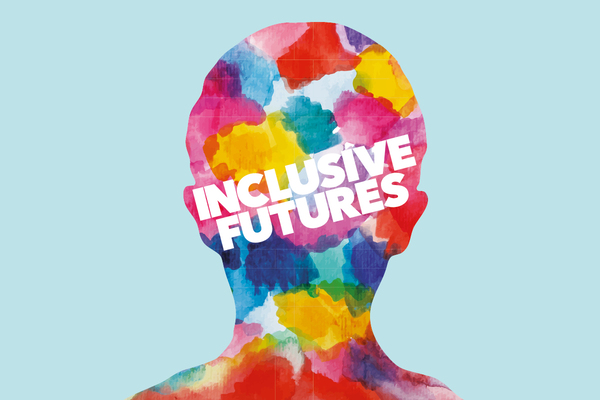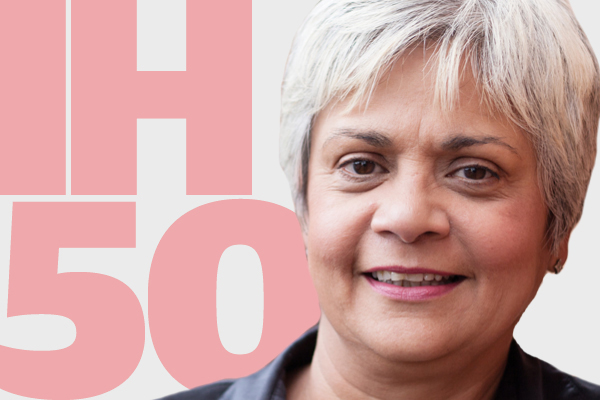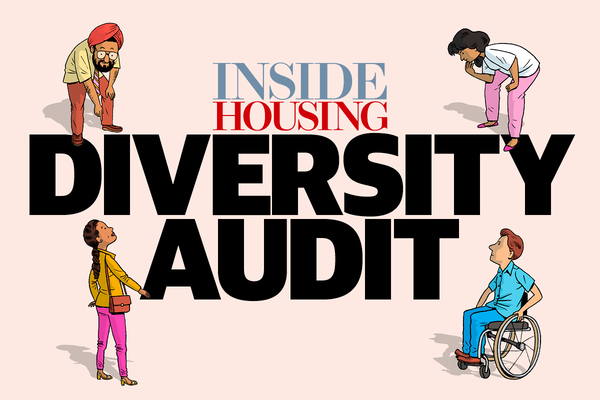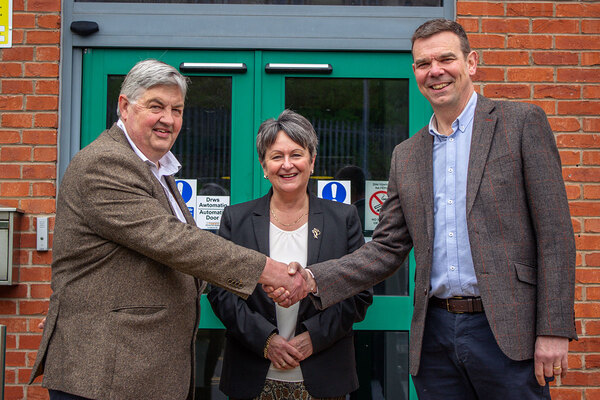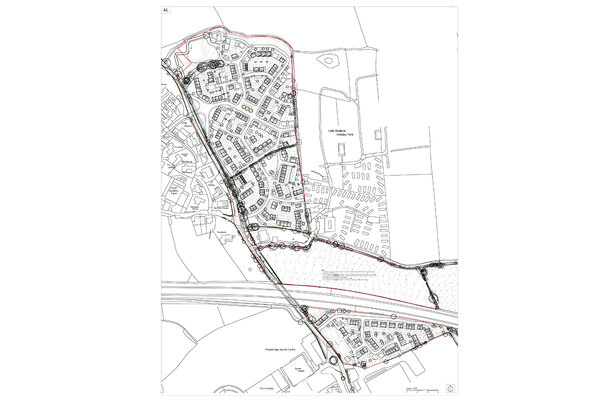You are viewing 1 of your 1 free articles
 John Anderson
John AndersonMen have forgotten their voice on gender equality in construction
Men should be louder on the need for equality and play an active part in bringing about change, writes John Anderson
Inside Housing’s Inclusive Futures campaign aims to promote diversity and inclusion among housing’s leadership teams
In recent years the staggering level of gender inequality in housebuilding has become recognised as one of the biggest problems facing our industry.
Earlier this year, even with the issue facing such scrutiny, a UK Economic Outlook report found that women still account for just 12.6% of the construction workforce.
This has to change. A more balanced workforce is not only key to economic success but also reflects our customer base and as the industry-wide skills gap becomes more apparent, it is increasingly vital that we pick up the pace.
“Many young women who are looking for careers don’t see housebuilding or construction as a viable option…we have to change that reputation.”
The fact is that our industry has a lot to do to attract talent to join in.
Many young women who are looking for careers don’t see housebuilding or construction as a viable option and if we’re going to attract the next generation of house builders – without gender being an issue – then we have to change that reputation.
The media is playing a vital role in building awareness around gender equality.
We’ve all seen countless profiles, surveys and discussion panels organised to highlight the importance of gender equality. I find it noticeable, however, that while discussion has grown louder, men seem to have forgotten their own voice.
It is unsurprising, and in many ways right, that women are championing the equality cause. However, they shouldn’t be doing so alone. This fight is vital for the future of the construction sector.
The 87.4% should be playing just as active a part as the 12.6% but that doesn’t seem to be the case.
So regarding the fact that 87.4% of the construction workforce are men, what can we do?
The first thing, as I’ve alluded to already, is to actually talk about it. We shouldn’t be silent partners in such a vital movement. Giving implicit support and then waiting for change isn’t enough – men should be loud and unequivocal in the need for equality and then look to play an active part in bringing about change, quickly.
This starts with getting involved in the industry-wide push to build recruitment and retention systems which embrace equality of opportunity, from apprenticeships to graduate schemes and career transition programmes.
It’s unacceptable that opportunities for jobs or career progression are susceptible to gender bias. Calling out this bias when it appears is everyone’s responsibility.
A need for fair and equal representation is important at all levels of an organisation – from trainees to the board.
We should all be actively scrutinising our senior management teams to consider whether they’re diverse and representative of both staff and customers.
I strongly believe that a balanced board means a balanced business. I’m incredibly proud that half of the senior team at Kier Living are women and I have no doubt that this enhances our work.
Moreover, it is inevitable that greater equality through an organisation will spread faster from the top than it will from the bottom.
Linked to building a fairer work environment, we need to do more than just pay lip service to flexibility when it comes to challenges faced, often by women, at work.
For example, childcare or caring for a loved one – companies should deliver when it counts, delivering more agile working hours and improving the work-life balance for all employees, including mothers.
“Greater equality through an organisation will spread faster from the top than it will from the bottom.”
Finally, we can drive partnerships with other organisations and with industry bodies to raise awareness even further.
For example, I’ve recently signed Kier Living up to the Home Builders Federation skills pledge, which includes a commitment to championing diversity and inclusion. It’s through making pledges such as this that companies find themselves committed to changing for the better.
The specific suggestions I’ve made just scratch the surface of what needs to be done to combat inequality.
We can all see this inequality, and many will be able to think of other ideas. I’m certain the majority of men reading this support what I’ve been saying, so please bring your ideas to the table.
Don’t just stay quiet, speak out. Get involved and help fix this.
John Anderson, executive director, Kier Living
Inclusive Futures
Inside Housing’s Inclusive Futures campaign aims to promote and celebrate diversity and inclusion.
We are pledging to publish diversity audits of our own coverage.
We are also committed to proactively promoting positive role models.
We will do this through the pages of Inside Housing. But we will also seek to support other publications and events organisations to be more inclusive.
Our Inclusive Futures Bureau will provide a database of speakers and commentators from all backgrounds, for use by all media organisations.
We are also challenging readers to take five clear steps to promote diversity, informed by the Chartered Institute of Housing’s diversity commission and the Leadership 2025 project.
THE INCLUSIVE FUTURES CHALLENGE
Inside Housing calls on organisations to sign up to an inclusive future by taking five steps:
Prioritise diversity and inclusion at the top: commitment and persistence from chief executives, directors and chairs in setting goals and monitoring progress.
Collect data on the diversity of your board, leadership and total workforce and publish annually with your annual report. Consider gender, ethnicity, disability, sexuality, age, and representation of tenants on the board.
Set aspirational targets for recruitment to the executive team, board and committees from under-represented groups.
Challenge recruiting staff and agencies to ensure that all shortlists include candidates from under-represented groups.
Make diversity and inclusion a core theme in your talent management strategy to ensure you support people from under-represented groups to progress their careers.
THE CASE FOR CHANGE
34%
of housing association chief executives are female
1%
of housing association executives have a disability
1.6%
of housing association board members are LGBT
Women make up 46% of the UK workforce, but Inside Housing research found that they are under-represented on housing association boards (36%), executive teams (39%) and among chief executives (34%).
Almost a fifth of working-age adults have a disability (18%), yet associations reported only 1% of executives and 4.5% of board members with a disability. Many were unable to provide details.
Nationwide, 14% of the working-age population come from a BME background, climbing to 40% in London and Birmingham. Yet our research found that 6.8% of board members identified as BME, compared with 4.5% of executives.
Statistics on representation of LGBT people in the workforce are in short supply, but official statistics suggest that 2% of the total UK population identify as lesbian, gay or bisexual, rising to 4.1% for 16 to 24-year-olds. Our survey found that 1.6% of board members and 10 executives were LGBT – but most organisations were unable to provide figures.
INSIDE HOUSING’S PLEDGES
We will take proactive steps to promote positive role models from under-represented groups and provide information to support change.
We pledge to:
Publish diversity audits: We will audit the diversity of the commentators we feature. We will formalise this process and publish the results for future audits twice a year.
Promote role models: We will work to highlight leading lights from specific under-represented groups, starting in early 2018 with our new BME Leaders List.
Launch Inclusive Futures Bureau: We will work with the sector to compile a database of speakers, commentators and experts from under-represented groups. The bureau will be available to events organisers, media outlets and publications to support them to better represent the talent in the sector.
Take forward the Women in Housing Awards: Inside Housing has taken on these successful awards and will work to grow and develop them.
Convene Inclusive Futures Summit: Our new high-level event will support organisations to develop and implement strategies to become more diverse and inclusive.
The Inside Housing Diversity Audit: how diverse has our coverage been?
The media plays a key role in championing diverse role models, so we designed a project to measure Inside Housing’s track record.

